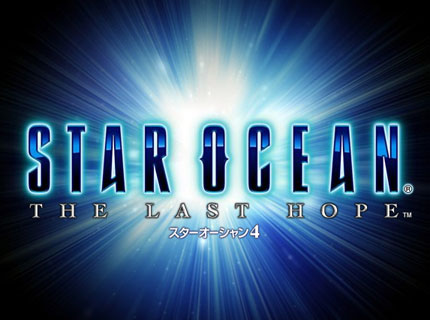Star Ocean doesn’t make the best first impression. The game’s story and characters are all insufferably anime — which is to say the main character’s name is Edge Maverick. The game opens with Edge and his childhood friend Reimi (whom he constantly identifies as such in casual conversation, you know, like real childhood friends do) departing on an exploratory voyage to discover other habitable planets for the human race. Upon traveling to their first destination, Something Goes Terribly Wrong which sends the cast on a fantastic adventure involving a number one-dimensional characters and a meandering, unfocused plot.

The story at large is a waste of time, filled with contrived drama and uneven tone. A character will whine melodramatically about the burden of responsibility one minute while another character will make self-referential anime jokes the next. The schizophrenic presentation of the story prevents it from ever taking a real emotional hold over the player.
Given that most traditional JRPGs rely on a strong story to make up for lackluster (read: boring) gameplay, Star Ocean might not be looking so great already. Luckily, the combat system in the game is incredibly entertaining, though whether or not it can carry the game will depend on the player. The game’s mechanics allow both button mashers and beat-em-up aficionados to find a comfortable dungeon-exploring groove.
Players can earn bonus tiles by killing monsters with certain conditions, like finishing with a critical hit or using only special attacks. These tiles fill a board that grants bonuses (health recovery, exp bonuses, etc) at the end of every match. The bonus board keeps repeated battles entertaining since few things will give a dyed-in-the-wool RPG player warm fuzzies like getting 150% experience bonus. Additionally, each character can earn 100 battle trophies, awarded by matching certain conditions in battle. Earning the trophies also provides a short term goal and can make the sluggish grind of combat much more stimulating. That umpteenth fight in any given dungeon is a lot more entertaining while working towards that “Attack first ten times in a row” trophy.
And that’s really the best of Star Ocean: oddly placed humor, cool-looking vistas, and several hours of beating the crap out of the local flora and fauna. The dungeon-cutscene-dungeon flow isn’t getting any more innovative, and often Star Ocean lingers too long at either end of the spectrum. Dungeons can last several hours, while story sequences will have you putting the controller down (probably to check your e-mail or chat on AIM) after minutes of gameplay for another extended non-interactive cutscene.
Star Ocean is an unapologetic JRPG in every positive and negative sense of the term. Gamers that aren’t already a fan of the genre will find little reason to convert. Those that have already acclimated to the genre’s negative conventions will get plenty of entertainment from oddly charming characters, satisfying combat, and visually impressive environments. As far as sci-fi RPGs go, If Mass Effect is a steak dinner at a fancy restaurant, Star Ocean is a jog down the block to a McDonalds for a kid’s McNugget combo with apple dippers. It’s not as good, and you know it’s not as good. Still, sometimes nothing hits the spot like a McNugget. Under all that JRPG bunk, Star Ocean satisfies and entertains — even though I’m not quite sure why.
“